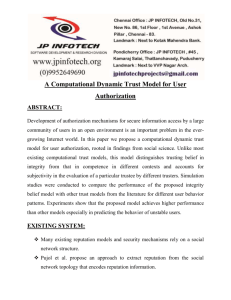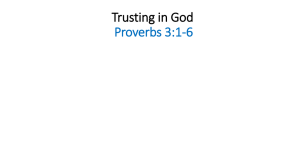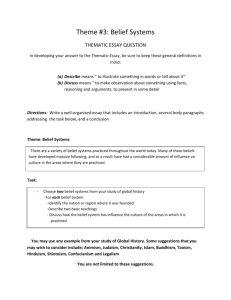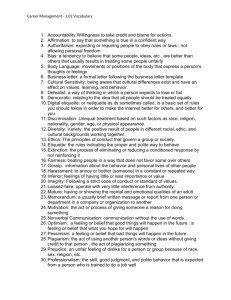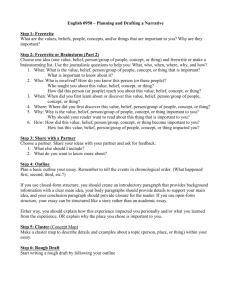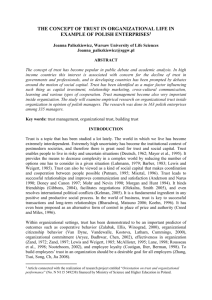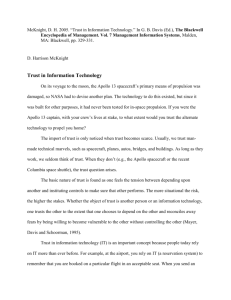A Computational Dynamic Trust Model for
advertisement
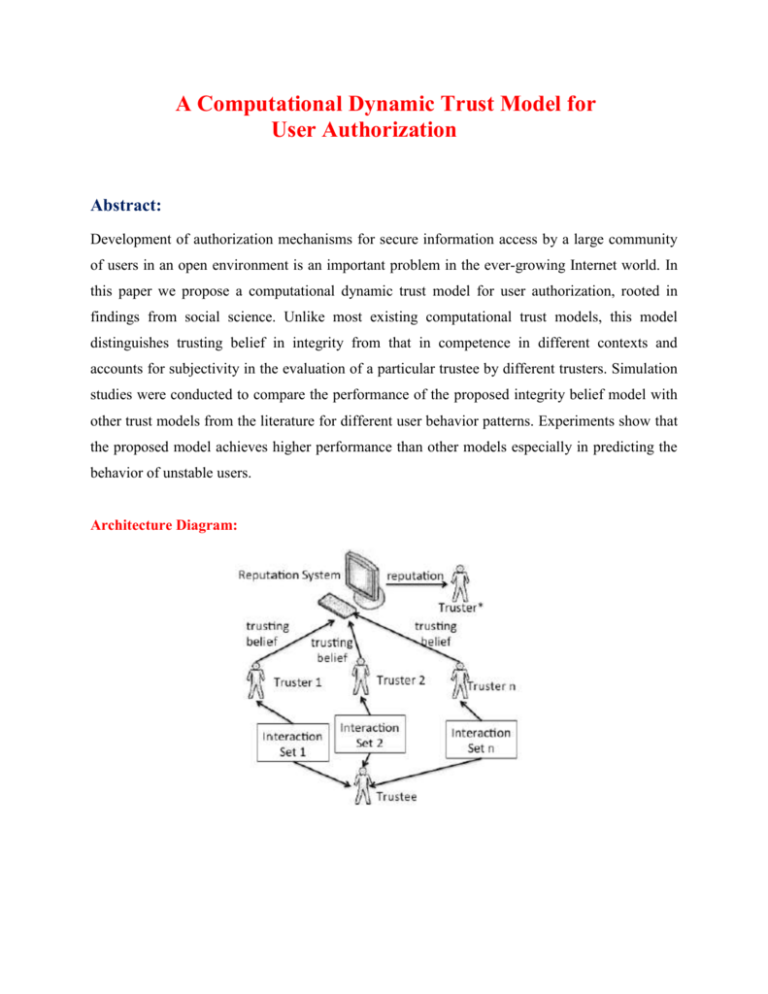
A Computational Dynamic Trust Model for User Authorization Abstract: Development of authorization mechanisms for secure information access by a large community of users in an open environment is an important problem in the ever-growing Internet world. In this paper we propose a computational dynamic trust model for user authorization, rooted in findings from social science. Unlike most existing computational trust models, this model distinguishes trusting belief in integrity from that in competence in different contexts and accounts for subjectivity in the evaluation of a particular trustee by different trusters. Simulation studies were conducted to compare the performance of the proposed integrity belief model with other trust models from the literature for different user behavior patterns. Experiments show that the proposed model achieves higher performance than other models especially in predicting the behavior of unstable users. Architecture Diagram: Existing System: The everyday increasing wealth of information available online has made secure information access mechanisms an indispensable part of information systems today. The mainstream research efforts for user authorization mechanisms in environments where a potential user’s permission set is not predefined, mostly focus on role-based access control (RBAC), which divides the authorization process into the role-permission and user-role assignment. RBAC in modern systems uses digital identity as evidence about a user to grant access to resources the user is entitled to. DisAdvantages: Holding evidence does not necessarily certify a user’s good behavior. Proposed System: we propose a computational dynamic trust model for user authorization. Mechanisms for building trusting belief using the first-hand (direct experience) as well as second-hand information (recommendation and reputation) are integrated into the model. The contributions of the model to computational trust literature are: • The model is rooted in findings from social science, i.e. it provides automated trust management that mimics trusting behaviors in the society, bringing trust computation for the digital world closer to the evaluation of trust in the real world. • Unlike other trust models in the literature, the proposed model accounts for different types of trust. Specifically, it distinguishes trusting belief in integrity from that in competence. • The model takes into account the subjectivity of trust ratings by different entities, and introduces a mechanism to eliminate the impact of subjectivity in reputation aggregation. Implementation Modules: 1. Mcknight’s Trust Model 2. Computational Trust Models 3. Context and Trusting Belief 4. Belief information and reputationAggregation methods Mcknight’s Trust Model: The social trust model, which guides the design of the computational model in this paper, was proposed by McKnight et al. after surveying more than 60 papers across a wide range of disciplines. It has been validated via empirical study. This model defines five conceptual trust types: trusting behavior, trusting intention, trusting belief, institution-based trust, and disposition to trust. Trusting behavior is an action that increases a truster's risk or makes the truster vulnerable to the trustee. Trusting intention indicates that a truster is willing to engage in trusting behaviors with the trustee. A trusting intention implies a trust decision and leads to a trusting behavior. Two subtypes of trusting intention are: 1. Willingness to depend: the volitional preparedness to make oneself vulnerable to the trustee. 2. Subjective probability of depending. Computational Trust Models: The problem of establishing and maintaining dynamic trust has attracted many research efforts. One of the first attempts trying to formalize trust in computer science was made by Marsh. The model introduced the concepts widely used by other researchers such as context and situational trust. Many existing reputation models and security mechanisms rely on a social network structure . Propose an approach to extract reputation from the social network topology that encodes reputation information. Walter et al. propose a dynamic trust model for social networks, based on the concept of feedback centrality. The model, which enables computing trust between two disconnected nodes in the network through their neighbor nodes, is suitable for application to recommender systems. Lang proposes a trust model for access control in P2P networks, based on the assumption of transitivity of trust in social networks, where a simple mathematical model based on fuzzy set membership is used to calculate the trustworthiness of each node in a trust graph symbolizing interactions between network nodes. Context and Trusting Belief: Context: Trust is environment-specific . Both trusters concern and trustees' behavior vary from one situation to another. These situations are called contexts. A truster can specify the minimum trusting belief needed for a specific context. Direct experience information is maintained for each individual context to hasten belief updating. In this model, a truster has one integrity trust per trustee in all contexts. If a trustee disappoints a truster, the misbehavior lowers the truster's integrity belief in him. For integrity trust, contexts do not need to be distinguished.Competence trust is context-dependent. The fact that Bob is an excellent professor does not support to trust him as a chief. A representation is devised to identify the competence type and level needed in a context. Belief information and reputation Aggregation methods: Belief about a trustee's competence is context specific. A trustee's competence changes relatively slowly with time. Therefore, competence ratings assigned to her are viewed as samples drawn from a distribution with a steady mean and variance. Competence belief formation is formulated as a parameter estimation problem. Statistic methods are applied on the rating sequence to estimate the steady mean and variance, which are used as the belief value about the trustee's competence and the associated predictability. System Configuration: HARDWARE REQUIREMENTS: Hardware - Pentium Speed - 1.1 GHz RAM - 1GB Hard Disk - 20 GB Floppy Drive - 1.44 MB Key Board - Standard Windows Keyboard Mouse - Two or Three Button Mouse Monitor - SVGA SOFTWARE REQUIREMENTS: Operating System : Windows Technology : Java and J2EE Web Technologies : Html, JavaScript, CSS IDE : My Eclipse Web Server : Tomcat Tool kit : Android Phone Database : My SQL Java Version : J2SDK1.5
